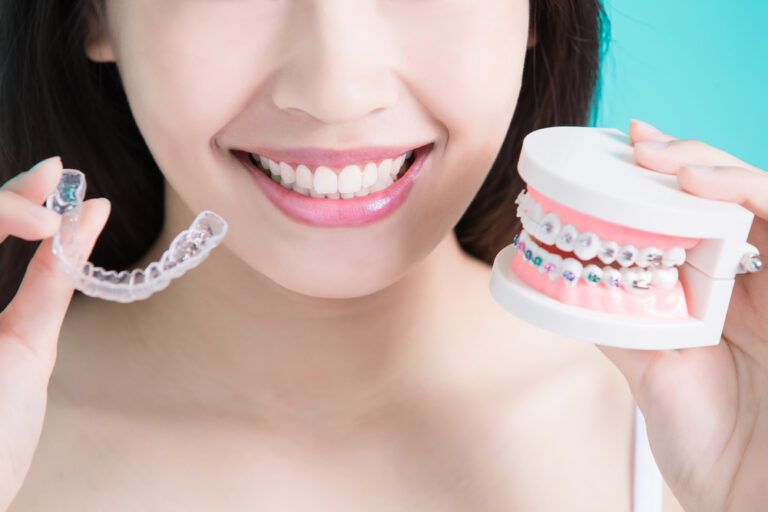The Advantages of Invisalign: A Modern Approach to Orthodontics

Invisalign is a popular orthodontic treatment that uses a series of clear, removable aligners to gradually move teeth into better alignment. Unlike traditional metal braces, these aligners are made from a smooth, BPA-free plastic and are custom-designed using 3D digital scanning technology. Each set of aligners is worn for about one to two weeks before switching to the next in the series, progressively guiding teeth into their desired positions.
The technology behind Invisalign has advanced significantly over the years, making it suitable for treating a wide variety of orthodontic concerns such as crowding, spacing, overbites, underbites, and crossbites. By using gentle, controlled force, Invisalign aligners can produce noticeable results with minimal interference in day-to-day activities.
Aesthetic Appeal: The Most Obvious Advantage
One of the main reasons patients consider Invisalign is its discreet appearance. The aligners are virtually invisible when worn, which can be a major draw for adults and teens who may feel self-conscious about wearing traditional braces. For individuals in professional or social settings, Invisalign offers a way to undergo orthodontic treatment without drawing attention to it.
Because they don’t involve brackets or wires, Invisalign aligners are often preferred by those who want to maintain a natural-looking smile throughout the treatment process. This can be especially valuable for people in fields like public speaking, sales, or performing arts where facial aesthetics matter on a daily basis.
Comfort and Convenience in Everyday Life
Comfort is another key advantage of Invisalign. The aligners are made from smooth plastic, which means there are no metal parts to irritate the inside of the mouth. Traditional braces can sometimes cause discomfort due to poking wires or bracket friction against the cheeks and gums. Invisalign eliminates these issues entirely.
In addition, Invisalign aligners are removable. This allows for greater flexibility in eating, drinking, brushing, and flossing. Patients don’t have to avoid certain foods as they would with metal braces, nor do they need to use special tools for oral hygiene. As long as the aligners are worn for the recommended 20–22 hours per day, patients can remove them temporarily when needed without compromising progress.
Fewer Office Visits and Less Maintenance
Invisalign often requires fewer in-person visits than traditional braces. While patients still need regular check-ins to monitor progress, these visits tend to be shorter and less frequent. There are no wires to adjust or brackets to replace, and most of the treatment adjustments are built into the pre-planned aligner schedule.
This convenience is particularly helpful for those with demanding schedules, long commutes, or busy families. With digital treatment planning and remote monitoring technology becoming more common, some Invisalign cases can even be tracked with fewer in-office appointments than ever before.
Predictable Results with Digital Treatment Planning
Another major advantage of Invisalign is the predictability of results. Advanced digital imaging and 3D treatment planning allow for a highly customized approach. Before the first aligner is even worn, patients can see a virtual representation of how their teeth will move and what the final result is expected to look like.
This planning technology not only helps create a precise roadmap for treatment, but it also gives patients more confidence in the process. It reduces the guesswork and makes it easier to understand how long the treatment will take and what each stage will involve.
Oral Hygiene Is Easier with Removable Aligners
Maintaining good oral hygiene during orthodontic treatment is critical to avoid cavities, gum disease, and staining. One of the biggest challenges with traditional braces is keeping the teeth and gums clean around all the hardware. Invisalign makes this significantly easier because the aligners are removed for brushing and flossing.
With no obstacles in the way, patients can use their regular toothbrush and floss as usual. This not only reduces the risk of oral health issues during treatment but also helps maintain a brighter, cleaner smile. It’s particularly beneficial for patients who are already prone to plaque buildup or have a history of dental concerns.
Suitable for a Wide Range of Orthodontic Issues
While it was originally designed for minor alignment corrections, Invisalign has evolved to treat a wide spectrum of orthodontic problems. Depending on the complexity of the case, Invisalign may be used for:
- Crowded or crooked teeth
- Spacing or gaps between teeth
- Overbite and underbite correction
- Crossbite and open bite alignment
- Relapse after previous orthodontic treatment
Each treatment plan is tailored to the patient’s specific needs. For complex cases, Invisalign can sometimes be combined with additional orthodontic tools or attachments to achieve more comprehensive results.
Lifestyle Benefits and Long-Term Results
The overall lifestyle compatibility of Invisalign is another reason for its popularity. From a functional standpoint, Invisalign lets patients continue participating in sports, playing musical instruments, and enjoying their favorite foods with minimal disruption. For travelers and students, the flexibility to change aligners at home without emergency wire fixes can be a huge relief.
Long-term outcomes are also a focus of Invisalign care. Once the active treatment phase is complete, patients are typically fitted with retainers to preserve their new smile. Just like with braces, retention is a crucial step to prevent teeth from shifting back. Because Invisalign retainers are similar to the treatment aligners, many patients find them easy to integrate into their routines.
Who May Not Be the Best Candidate?
While Invisalign is highly versatile, it’s not the right fit for everyone. Certain severe bite issues or jaw discrepancies may still require traditional braces or even surgical intervention. Additionally, patient compliance plays a big role in the success of Invisalign—because the aligners are removable, they must be worn consistently to be effective.
Young children and individuals who might forget to wear the aligners as instructed may be better suited for fixed orthodontic solutions. A professional consultation that includes a detailed exam and digital imaging can determine whether Invisalign is the right choice or if an alternative treatment is better suited to the case.
Understanding the Big Picture
Invisalign has redefined how people think about orthodontic treatment. By combining aesthetics, comfort, convenience, and digital precision, it presents a modern solution for individuals who want to improve their smiles without the noticeable look or limitations of traditional braces. Whether the goal is to address minor crowding or correct more significant alignment concerns, Invisalign offers a streamlined path to a healthier, more confident smile.
As with any medical or dental decision, consulting a qualified provider is essential. With professional guidance, patients can understand what Invisalign can achieve, what limitations may exist, and how to plan for the best possible outcome—both functionally and cosmetically.
Resources
Phan, X., & Ling, P. H. (2007). Clinical limitations of Invisalign. Journal of the Canadian Dental Association
Kravitz, N. D., et al. (2009). How well does Invisalign work? A prospective clinical study evaluating the efficacy of tooth movement. American Journal of Orthodontics and Dentofacial Orthopedics
Boyd, R. L. (2008). Complex orthodontic treatment using a new clear aligner system. Journal of Clinical Orthodontics

Recent Comments